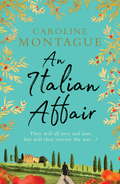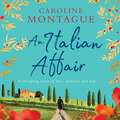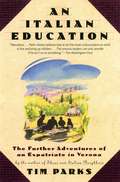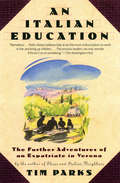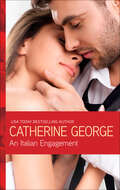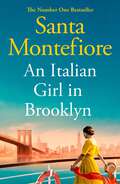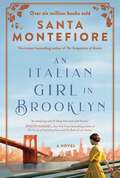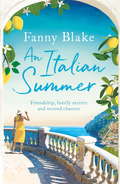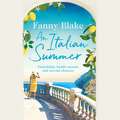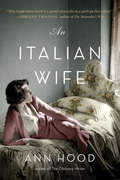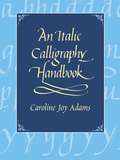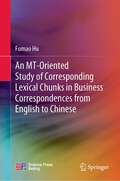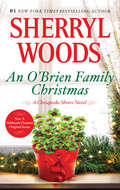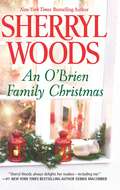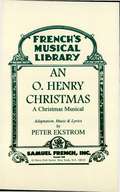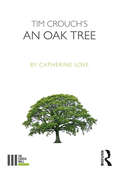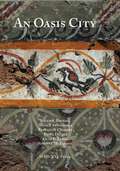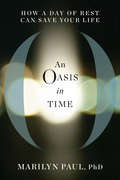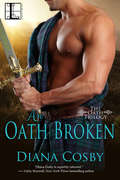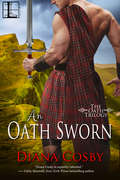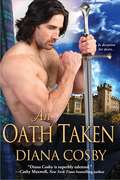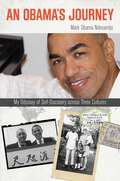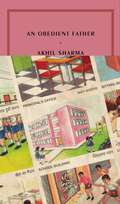- Table View
- List View
An Italian Affair: A gripping and emotional World War 2 novel of family, love and devastating secrets
by Caroline Montague'Thoroughly engrossing' - Julian Fellowes, creator of Downton AbbeyLove. War. Family. Betrayal.Italy, 1937. Alessandra Durante is grieving the loss of her husband when she discovers she has inherited her ancestral family seat, Villa Durante, deep in the Tuscan Hills. Longing for a new start, she moves from her home in London to Italy with her daughter Diana and sets about rebuilding her life. Under the threat of war, Alessandra's house becomes first a home and then a shelter to all those who need it. Then Davide, a young man who is hiding the truth about who he is, arrives, and Diana starts to find her heart going where her head knows it must not.Back home in Britain as war breaks out, Alessandra's son Robert, signs up to be a pilot, determined to play his part in freeing Italy from the grip of Fascism. His bravery marks him out as an asset to the Allies, and soon he is being sent deep undercover and further into danger than ever before.As war rages, the Durante family will love and lose, but will they survive the war...?'Enthralling...An Italian Affair snares us in an ever-tightening circle of love and despair, secrets and forgiveness' - Joanna Lumley
An Italian Affair: A gripping and emotional World War 2 novel of family, love and devastating secrets
by Caroline MontagueLove. War. Family. Betrayal.Italy, 1937. Alessandra Durante is grieving the loss of her husband when she discovers she has inherited her ancestral family seat, Villa Durante, deep in the Tuscan Hills. Longing for a new start, she moves from her home in London to Italy with her daughter Diana and sets about rebuilding her life. Under the threat of war, Alessandra's house becomes first a home and then a shelter to all those who need it. Then Davide, a young man who is hiding the truth about who he is, arrives, and Diana starts to find her heart going where her head knows it must not.Back home in Britain as war breaks out, Alessandra's son Robert, signs up to be a pilot, determined to play his part in freeing Italy from the grip of Fascism. His bravery marks him out as an asset to the Allies, and soon he is being sent deep undercover and further into danger than ever before.As war rages, the Durante family will love and lose, but will they survive the war...?'Thoroughly engrossing' - Julian Fellowes, creator of Downton Abbey'Enthralling...An Italian Affair snares us in an ever-tightening circle of love and despair, secrets and forgiveness' - Joanna Lumley
An Italian Education: The Further Adventures of an Expatriate in Verona
by Tim ParksTim Parks's best seller, Italian Neighbors, offered a sparkling, witty, and acutely observed account of an expatriate's life in a small village outside of Verona. Now in An Italian Education, Parks continues his chronicle of adapting to Italian society and culture, while raising his Italian-born children. With the exquisite eye for detail, character, and intrigue that has brought him acclaim as a novelist, Parks creates an enchanting portrait of Italian parenthood and family life at home, in the classroom, and at church. Shifting from hilarity to despair in the time it takes to sing a lullaby, Parks learns that to be a true Italian, one must live by the motto "All days are one.”
An Italian Education: The Further Adventures of an Expatriate in Verona
by Tim ParksA &“marvelous&” Mediterranean memoir of an expatriate father raising his children in Italy—from the author of Italian Neighbors (The Washington Post). Tim Parks offers another lively firsthand account of Italian society and culture—this time focusing on all the little things that turn an ordinary newborn infant into a true Italian. When British-born Tim Parks heard a mother at the beach in Pescara shout to her son, &“Alberto, don&’t sweat! No you can&’t go in the sea till eleven, it&’s still too cold, go and see your cousin in row three number fifty-two,&” he was inspired to write about parenting in Italy—which he was doing himself at the time after adopting the country as his own. In this humorous memoir, Parks offers an enchanting portrait of Italian childhood that shifts from comedy to despair in the time it takes to sing a lullaby. The result is &“a wry, thoughtful, and often hilarious book . . . a parable of how our children, no matter what, are other than ourselves&” (The New Yorker). &“Glimpses of Italy that are fond, critical, pithy and penetrating.&” —The Atlanta Journal-Constitution
An Italian Engagement
by Catherine GeorgeMax Wingate is darkly, broodingly handsome-a perfect fit for his Italian surroundings. But his romantic charm and the fact that he rescues her still isn't enough to persuade Abigail Green to fall headlong into his arms.There's something held-back and vulnerable about Abby, behind her businesslike exterior, but Max is driven by his desire for her to continue his pursuit. He's determined to have her open up, surrender to him, and he'll use any means at his disposal...
An Italian Girl in Brooklyn: A spellbinding story of buried secrets and new beginnings
by Santa MontefioreDark secrets and hidden sorrows abound in Santa Montefiore&’s spellbinding new novel set in war-torn Italy and the streets of New York.'Nobody does epic romance like Santa Montefiore' JOJO MOYES&‘A wonderful story, beautifully told. I absolutely tore through it!&’ KAREN SWAN New York, 1979. It is Thanksgiving and Evelina has her close family and beloved friends gathered around, her heart weighted with gratitude for what she has and regret for what she has given up. She has lived in America for over thirty years, but she is still Italian in her soul. Northern Italy, 1934. Evelina leads a sheltered life with her parents and siblings in a villa of fading grandeur. When her elder sister Benedetta marries a banker, to suit her father&’s wishes rather than her own, Evelina swears that she will never marry out of duty. She knows nothing of romantic love, but when she meets Ezra, son of the local dressmaker, her heart recognises it like an old friend. Evelina wants these carefree days to last forever. She wants to bask in sunshine, beauty and love and pay no heed to the grey clouds gathering on the horizon. But nothing lasts forever. The shadows of war are darkening over Europe and precious lives are under threat…
An Italian Girl in Brooklyn: A spellbinding story of buried secrets and new beginnings
by Santa MontefioreDark secrets and hidden sorrows abound in Santa Montefiore&’s spellbinding new novel set in war-torn Italy and the streets of New York. 'Nobody does epic romance like Santa Montefiore' JOJO MOYES New York, 1979. It is Thanksgiving and Evelina has her close family and beloved friends gathered around, her heart weighted with gratitude for what she has and regret for what she has given up. She has lived in America for over thirty years, but she is still Italian in her soul. Northern Italy, 1934. Evelina leads a sheltered life with her parents and siblings in a villa of fading grandeur. When her elder sister Benedetta marries a banker, to suit her father&’s wishes rather than her own, Evelina swears that she will never marry out of duty. She knows nothing of romantic love, but when she meets Ezra, son of the local dressmaker, her heart recognises it like an old friend. Evelina wants these carefree days to last forever. She wants to bask in sunshine, beauty and love and pay no heed to the grey clouds gathering on the horizon. But nothing lasts forever. The shadows of war are darkening over Europe and precious lives are under threat…
An Italian Grows in Brooklyn
by Jerry Della Femina Charles SopkinA funny, touching, and bitter memoir about myths and misconceptions of being Italian American. Within a thirty-year span in the early 19th century, the Delia Femina family nearly empties their Italian village near Naples and migrates to Brooklyn's Gravesend neighborhood in the United States. The Italian's inability to let anyone leave the family meant the family moved intact to the United States as they kept their village habits and customs.
An Italian Summer
by Fanny BlakeA compelling novel about friendship, family secrets and second chances, set against the backdrop of southern Italy. Sandy is in her fifties, and at a crossroads in her life: she's a teacher and respected by her pupils, but she feels she is being sidelined in favour of younger colleagues. So when her mother dies, leaving her a sealed envelope addressed to an unknown woman living in Naples, Sandy decides to head to Italy to resolve the mystery by delivering the letter herself. She books herself on to a small sightseeing trip from Rome to Naples and the Amalfi Coast, hoping to meet some like-minded people along the way. Who is the mysterious woman she is searching for? And will Sandy find friendship, or even love, along the way...? Praise for Fanny Blake: 'Fanny Blake has the gift of creating wonderful page turners from very domestic situations; and then making them warm and funny as well' Penny Vincenzi 'I love the way Fanny Blake proves that women just become more and more fascinating' Adele Parks 'I love that she writes about women our age, and the painful and wise truths we know' Marian Keyes 'Move over Joanna Trollope, Fanny Blake has arrived' Veronica Henry
An Italian Summer: The most uplifting and heartwarming holiday read
by Fanny BlakeAN ITALIAN SUMMER is a novel about friendship, family secrets and second chances, set against the backdrop of southern Italy.Sandy is in her fifties, and at a crossroads in her life: she's a teacher and respected by her pupils, but she feels she is being sidelined in favour of younger colleagues. So when her mother dies, leaving her a sealed envelope addressed to an unknown woman living in Naples, Sandy decides to head to Italy to resolve the mystery by delivering the letter herself. She books herself on to a small sightseeing trip from Rome to Naples and the Amalfi Coast, hoping to meet some like-minded people along the way. Who is the mysterious woman she is searching for? And will Sandy find friendship, or even love, along the way...?Your favourite authors love Fanny Blake:'Fanny Blake has the gift of creating wonderful page turners from very domestic situations; and then making them warm and funny as well' Penny Vincenzi'I love the way Fanny Blake proves that women just become more and more fascinating' Adele Parks'I love that she writes about women our age, and the painful and wise truths we know' Marian Keyes'Warm, funny, wise and relatable. A perfect summer read' Veronica HenryRead by Jane McDowell(p) Orion Publishing Group 2018
An Italian Wife
by Ann HoodFrom the best-selling author of The Obituary Writer, the stirring multigenerational story of an Italian-American family. An Italian Wife is the extraordinary story of Josephine Rimaldi--her joys, sorrows, and passions, spanning more than seven decades. The novel begins in turn-of-the-century Italy, when fourteen-year-old Josephine, sheltered and naive, is forced into an arranged marriage to a man she doesn't know or love who is about to depart for America, where she later joins him. Bound by tradition, Josephine gives birth to seven children. The last, Valentina, is conceived in passion, born in secret, and given up for adoption. Josephine spends the rest of her life searching for her lost child, keeping her secret even as her other children go off to war, get married, and make their own mistakes. Her son suffers in World War One. One daughter struggles to assimilate in the new world of the 1950s American suburbs, while another, stranded in England, grieves for a lover lost in World War Two. Her granddaughters experiment with the sex, drugs, and rock-and-roll in the 1970s. Poignant, sensual, and deeply felt, An Italian Wife is a sweeping and evocative portrait of a family bound by love and heartbreak.
An Italic Calligraphy Handbook (Lettering, Calligraphy, Typography)
by Caroline Joy AdamsAn updated version of the classic Renaissance manuals, this handbook is geared toward modern practitioners. It features the best ideas from the early guides, compiled into a contemporary system that makes writing the Italic as simple as possible. With this manual as a guide, both experienced and novice calligraphers can cultivate their natural creativity.
An MT-Oriented Study of Corresponding Lexical Chunks in Business Correspondences from English to Chinese
by Fumao HuThis book sheds new light on chunk in business correspondence in order to promote the advancement of machine translation. By presenting a bilingual chunk table for correspondence and providing basic theoretical and empirical data on the construction of an MT-based English-Chinese chunk bank for business correspondence, it seeks to improve the accuracy of machine translation systems in a new way. It mainly addresses two questions: (1) How can business English correspondence chunks be defined in machine translation? (2) What are the correspondences between English-Chinese business letter chunks for machine translation? With the aid of a parallel corpus, qualitative and quantitative research methods, and the construction grammar theory, the book puts forward a theoretical model of chunk composition analysis. Further, the findings presented here can be used for the machine translation of English-Chinese business letters, helping to break down communication barriers and promote international business and exchanges.
An O'Brien Family Christmas
by Sherryl WoodsReturn to the beloved town of Chesapeake Shores for the holiday season in this classic tale from #1 New York Times bestselling author Sherryl Woods—and watch the new series Chesapeake Shores on Hallmark Channel!Dating Matthew O’Brien—a playboy and a younger man—cost Laila Riley her career and her parents’ respect. A high price, even for love—and when Laila decides it was just a fling, she breaks it off, despite Matthew’s objections.But the O’Brien family has other ideas, and they conspire to get Laila to join them on a Dublin holiday. It’s a great time to get away from it all, but Laila has reservations about the trip. Matthew’s bound to be there, and she’s far from immune. What if she can’t resist temptation? Meanwhile, the O’Briens are in an uproar over matriarch Nell’s unexpected romance with an old flame. Will she follow her heart, despite the risks? And will Laila discover that some risks are actually once-in-a-lifetime opportunities?Originally published in 2011.
An O'Brien Family Christmas (Chesapeake Shores Series, Book #8)
by Sherryl WoodsDating Matthew O'Brien-a playboy and a younger man-cost Laila Riley her career and her parents' respect. A high price, even for love-and when Laila decides it was just a ï ¬ , ing, she breaks it off, despite Matthew's objections.But the O'Brien family has other ideas, and they conspire to get Laila to join them on a Dublin holiday. It's a great time to get away from it all, but Laila has reservations about the trip. Matthew's bound to be there, and she's far from immune. What if she can't resist temptation?Meanwhile, the O'Briens are in an uproar over matriarch Nell's unexpected romance with an old ï ¬ , ame. Will she follow her heart despite the risks? And will Laila discover that some risks are actually once-in-a-lifetime opportunities?
An O. Henry Christmas (Musical)
by Peter EkstromTwo one-act musicals / 2m, 2f or 3m, 3f / Simple set / Two heart-warming one-act musicals based on the classic O. Henry stories capture the true spirit of giving ( The Gift of the Magi and The Last Leaf ). This holiday favorite is set in turn-of-the-century New York City.
An Oak Tree
by Catherine LoveFirst Published in 2017. Routledge is an imprint of Taylor & Francis, an Informa company.
An Oasis City (ISAW Monographs #6)
by Roger S. Bagnall Nicola Aravecchia Raffaella Cribiore Paola Davoli Olaf E. Kaper Susanna McFaddenScattered through the vast expanse of stone and sand that makes up Egypt’s Western Desert are several oases. These islands of green in the midst of the Sahara owe their existence to springs and wells drawing on ancient aquifers. In antiquity, as today, they supported agricultural communities, going back to Neolithic times but expanding greatly in the millennium from the Saite pharaohs to the Roman emperors. New technologies of irrigation and transportation made the oases integral parts of an imperial economy. Amheida, ancient Trimithis, was one of those oasis communities. Located in the western part of the Dakhla Oasis, it was an important regional center, reaching a peak in the Roman period before being abandoned. Over the past decade, excavations at this well-preserved site have revealed its urban layout and brought to light houses, streets, a bath, a school, and a church. The only standing brick pyramid of the Roman period in Egypt has been restored. Wall-paintings, temple reliefs, pottery, and texts all contribute to give a lively sense of its political, religious, economic, and cultural life. This book presents these aspects of the city’s existence and its close ties to the Nile valley, by way of long desert roads, in an accessible and richly illustrated fashion.
An Oasis in Time: How a Day of Rest Can Save Your Life
by Marilyn PaulThere is a surprising way out of the frenzy, that always-being-behind feeling, and the endless to-do list.Now more than ever, people are seeking a reprieve from the constant pressure to achieve, produce, and consume. While many turn to sporadic bouts of mindfulness and meditation, organizational change specialist Marilyn Paul offers a complementary solution that is as radical as it is ancient. In her new book An Oasis in Time, Paul focuses on the profound benefits of taking a modern-day Sabbath each week for deep rest and nourishing renewal. The energy, perspective, creativity, sense of well-being, and yes, increased productivity that ensue are lifesaving.Drawing on Sabbath tradition, contemporary research, and interviews with scores of busy people, Paul shows that it is possible to introduce these practices regardless of your religious beliefs. Starting with just an hour or two, you can carve out the time from your packed schedule, design your weekly oasis experience, and most importantly, change your mind-set so you can enjoy the pleasure of regularly slowing down and savoring life every week. From surrounding yourself with nature to practicing rituals for beginning and ending oasis time to implementing strategies for connecting with friends and family, self, and source, you will discover practical ways to step off the treadmill and into timeless refreshment on your way to a calmer, richer, more fulfilling life.
An Oath Broken (The Oath Trilogy #2)
by Diana CosbyIn this medieval Scottish romance, an English lady&’s unhappy betrothal leads to danger, adventure, and passion on the Scottish moors. Scotland, 1292. Lady Sarra Bellacote would sooner marry a boar than a countryman of the bloodthirsty brutes who killed her parents. Yet despite—or perhaps because of—her valuable holdings, she is being dragged to Scotland to be wed against her will. To complicate the desperate situation, the knight hired to do the dragging is dark, wild, irresistible. And he, too, is intolerably Scottish. Giric Armstrong, Earl of Terrick, takes no pleasure in escorting a feisty English lass to her betrothed. He simply needs the coin to rebuild his castle. But the job won&’t be easy. For Lady Sarra isn&’t the only one determined to see her engagement fail. Men with darker motives want to stop the wedding—even if it means killing the bride. Now, in close quarters with this beautiful English heiress, Terrick must fight his mounting desire, and somehow keep Sarra alive long enough to lose her forever to another man . . . &“Plenty of action . . . loads of treachery. Fans of medieval Scotland will enjoy.&” —Library Journal
An Oath Sworn (The Oath Trilogy #3)
by Diana CosbyA Scottish warrior and a beautiful French royal face danger and passion in the untamed highlands in this medieval Scottish romance. Scotland, 1299. The bastard daughter of the French king, Marie Alesia Serouge has just one chance at freedom when she escapes her captor in the Scottish highlands. A mere pawn in a scheme to destroy relations between France and Scotland, Marie must reach her father and reveal the Englishman&’s treacherous plot. But she can&’t abandon the wounded warrior she stumbles upon—and she can&’t deny that his fierce masculinity, Scottish or not, stirs something wild inside her. Colyne MacKerran is on a mission for his king, and he&’s well aware that spies are lying in wait for him everywhere. Wounded en route, he escapes his attackers and is aided by an alluring Frenchwoman . . . whose explanation for her presence in the Highlands rings false. Even if she saved his life, he cannot entirely trust her. But he won&’t leave her to the mercy of brigands, either. And as they race for the coast, he can&’t help but wonder if her kiss is as passionate as she is.
An Oath Taken (The Oath Trilogy #1)
by Diana CosbyA lady thief—dressed as a lad—stumbles into trouble on the Scottish border in a romance by this &“superbly talented&” author (Cathy Maxwell, New York Times–bestselling author of Her First Desire). As the new castellan, Sir Nicholas Beringar has the daunting task of rebuilding Ravenmoor Castle on the Scottish border and gaining the trust of the locals—one of whom wastes no time in trying to rob him. Instead of punishing the boy, Nicholas decides to make him his squire. Little does he know the thieving young lad is really . . . a lady. Lady Elizabet Armstrong had donned a disguise in an attempt to free her brother from Ravenmoor's dungeons. Although intimidated by the confident Englishman with his well-honed muscles and beguiling eyes, she cannot refuse his offer. Nicholas senses that his new squire is not what he seems. His gentle attempts to break through the boy&’s defenses leave Elizabet powerless to stem the desire that engulfs her. And when the truth is exposed, she&’ll have to trust in Nicholas&’s honor to help her people—and to surrender to his touch . . .
An Oath of Dogs
by Wendy WagnerKate Standish has been on the forest-world of Huginn less than a week and she’s already pretty sure her new company murdered her boss. But the little town of mill workers and farmers is more worried about eco-terrorism and a series of attacks by the bizarre, sentient dogs of this planet, than a death most people would like to believe is an accident. That is, until Kate’s investigation uncovers a conspiracy which threatens them all.File Under: Science Fiction
An Obama's Journey: My Odyssey of Self-Discovery across Three Cultures
by Mark Obama NdesandjoIn this revealing and beautifully written memoir, Mark Obama Ndesandjo, recounts his complex relationship with his older half-brother, President Barack Obama, including their first meeting in Kenya over twenty years ago. The book also offers the author's inspiring personal story about identity and multiculturalism. Rare family photos add to the book's personal nature as does the intense recounting of domestic violence in the home of Barack Obama Sr.’s and his third wife, Ruth Baker, Mark’s Jewish-American mother. The book also attempts to set the records straight on several points of the president’s best-selling memoir Dreams from My Father. In its connection to President Obama, Mark's story takes on an even greater significance because it becomes all the more directly, a story of American identity and a window into the complex figure of the father they share, Barack Obama Sr., their roots in Kenya, their multicultural identities, and their relationships with America.
An Obedient Father: A Novel (Fsg Classics Ser.)
by Akhil SharmaRevised and featuring a new foreword by the author, this uncompromising novel returns, more powerful than ever: "A portrait of a country ravaged by vendetta and graft, its public spaces loud with the complaints of religious bigots and its private spaces cradling unspeakable pain." (Hilary Mantel, New York Review of Books)An Obedient Father introduced one of the most admired voices in contemporary fiction. Set in Delhi in the 1990s, it tells the story of an inept bureaucrat enmired in corruption, and of the daughter who alone knows the true depth of his crimes. Decried in India for its frank treatment of child abuse, the novel was widely praised elsewhere for its compassion, and for a plot that mingled the domestic with the political, tragedy with farce. Yet, as Akhil Sharma writes in his foreword to this new edition, he was haunted by what he considered shortcomings within the book: almost twenty years later, he returned to face them. Here is the result, a leaner, surer version with even greater power.
